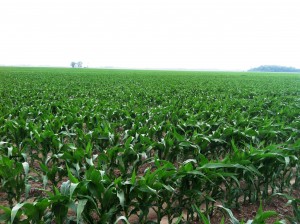If you earn money managing or working on a farm, you are in the farming business. Farms include plantations, ranches, ranges and orchards. Farmers may raise livestock, poultry or fish, or grow fruits or vegetables. Here are 10 things about farm income and expenses that the IRS wants you to know.
- Crop insurance proceeds. Insurance payments from crop damage count as income. They should generally be reported the year they are received.
- Deductible farm expenses. Farmers can deduct ordinary and necessary expenses as business expenses. An ordinary farming expense is one that is common and accepted in the farming business. A necessary expense is one that is appropriate for that business.
- Employees and hired help. You can deduct reasonable wages you paid to your farm’s full and part-time workers. You must withhold Social Security, Medicare and income taxes from your employees’ wages.
- Items purchased for resale. If you purchased livestock and other items for resale, you may be able to deduct their cost in the year of the sale. This includes freight charges for transporting livestock to your farm.
- Repayment of loans. You can only deduct the interest you paid on a loan if the loan proceeds are used for your farming business. You cannot deduct interest on a loan used for personal expenses.
- Weather-related sales. Bad weather may force you to sell more livestock or poultry than you normally would. If so, you may be able to postpone reporting a gain from the sale of the additional animals.
- Net operating losses. If deductible expenses are more than income for the year, you may have a net operating loss. You can carry that loss over to other years and deduct it. You may get a refund of part or all of the income tax you paid for past years, or you may be able to reduce your tax in future years.
- Farm income averaging. You may be able to average some or all of the current year’s farm income by spreading it out over the past three years. This may lower your taxes if your farm income is high in the current year and low in one or more of the past three years. This method does not change your prior year tax. It only uses the prior year information to figure your current year tax.
- Fuel and road use. You may be able to claim a tax credit or refund of federal excise taxes on fuel used on your farm for farm work.
- Farmers Tax Guide. More information about farm income and deductions is in Publication 225, Farmer’s Tax Guide. You can download it at IRS.gov, or call the IRS at 800-TAX-FORM (800-829-3676) to have it mailed to you.







